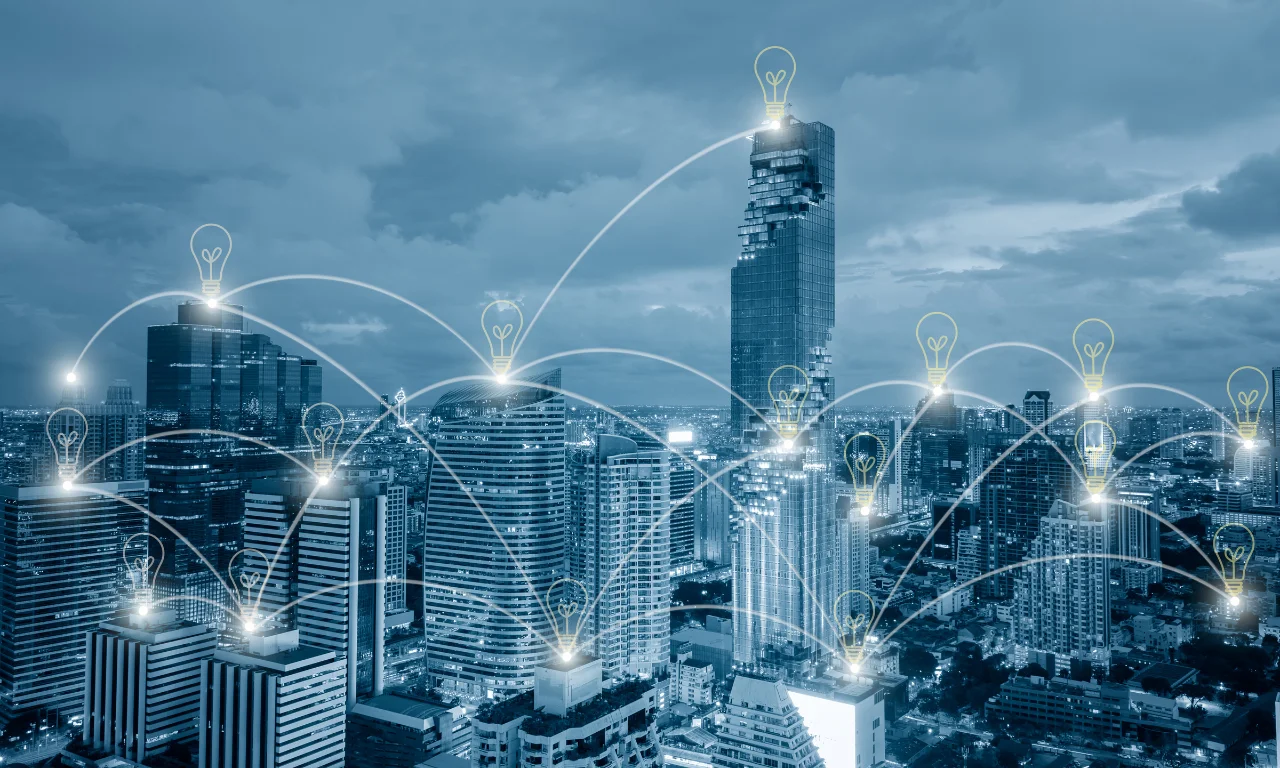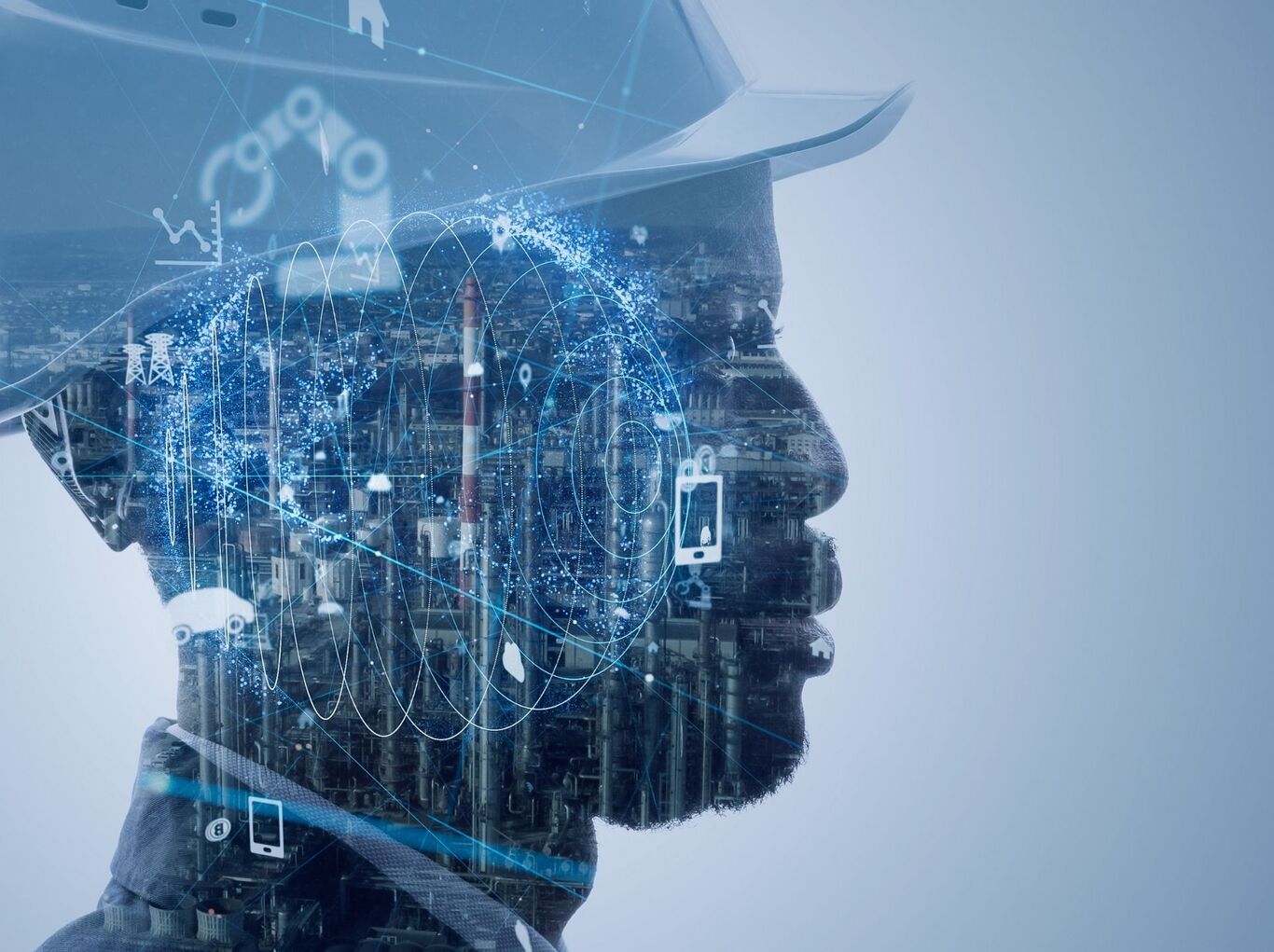Agentic AI in Energy and Utilities for Optimisation with Examples

The way we manage energy today just isn’t keeping up.
Demand is growing fast. Grids are under pressure, and unexpected changes, like sudden weather shifts or usage spikes, can throw everything off balance.
Most systems still rely on people stepping in to fix things when something goes wrong. That means delays, inefficiencies and, in many cases, higher costs.
But that’s starting to change.
With the rise of agentic AI in energy, we're seeing a smarter way to manage power. These AI-driven systems don’t wait for instructions; they understand what’s happening, make decisions, and take action on their own.
They’re like digital teammates that work behind the scenes by adjusting power supply, predicting demand, and preventing breakdowns before they happen.
Take Eneco in Belgium.
They serve over 1 million customers and now use AI agents to adjust their grid in real-time. The result? Fewer outages and faster response times, with less manual work involved.
In this blog, we’ll break down what agentic AI in energy really means and how your business can start using it.
Applications of agentic AI across the energy value chain
Agentic AI is changing how energy works - from how it’s made to how it’s delivered and used. These smart systems help make every part of the process more efficient, less wasteful, and better for the planet.
1. Smart grid management
Managing modern energy grids is no small task.
With demand shifting constantly and more renewables feeding into the system, keeping everything stable is a full-time job.
This is where agentic AI in energy changes the game. Instead of waiting for human teams to step in, intelligent energy agents continuously monitor the grid. They track voltage levels, usage spikes, and equipment performance, then act in real-time.
If a line is overloaded or a fault is detected, these agents automatically reroute power, balance the load, or even flag early signs of a bigger issue. This means no delays and no manual escalation.
Did you know?
AI is already making a real difference in Europe’s power grids. In early trials, it helped cut outages by 11% - just by spotting issues faster and keeping the system balanced automatically, according to a 2024 Eurelectric report.
2. Real-time energy load balancing
Balancing electricity demand in real time is one of the biggest challenges in modern energy management. Demand can spike suddenly during a heatwave, for example, and if the grid can’t keep up, blackouts follow.
Agentic AI in energy helps prevent that.
These systems use autonomous energy distribution to adjust the flow of electricity based on what’s happening at the moment. When demand rises, they reroute power from lower-use areas. When it drops, they shift to storage or scale down generation to avoid waste.
But that’s only half the story.
By applying predictive analytics for utilities, AI can also forecast upcoming spikes, like increased usage during evenings or bad weather, and take action before the load hits.
3. Predictive Maintenance For Power Infrastructure
Power infrastructure doesn’t fail overnight. Most issues build up slowly until something breaks, often at the worst possible time.
According to McKinsey, using AI to spot problems early can cut surprise outages by half, and even bring down maintenance costs by over 20%.
Using predictive analytics for utilities, these systems spot early warning signs before failure happens. They monitor everything from transformer vibrations to temperature spikes in cables and detect subtle changes that human teams might miss.
When a problem starts to surface, the system flags it, recommends a fix, or even schedules maintenance automatically.
4. Energy Forecasting And Demand Planning
Knowing how much energy people will need tomorrow or next week can make or break operational efficiency.
Produce too little, and you risk outages. Produce too much, and you waste resources and money.
This is why smart power forecasting is becoming a priority across the energy sector.
With agentic AI in energy, forecasting isn’t just about guessing trends. It’s about using real-time data, weather patterns, past consumption behaviour, and even local events to make accurate, actionable predictions.
Know this:
In the UK, National Grid ESO is using AI to better predict when people will need power. It’s already made their forecasts 33% more accurate, which helps cut both costs and carbon emissions.
5. Autonomous Renewable Energy Optimisation (Solar, Wind)
Solar and wind power have changed the game, but managing them isn’t always easy.
The challenge? These sources aren’t consistent. A cloudy day or a drop in wind speed can suddenly reduce supply, leaving the grid unbalanced if no one acts fast enough.
With agentic AI in energy, autonomous systems monitor weather conditions, track generation levels, and predict dips or surges before they happen. When output falls, they might reroute power from battery storage. When output spikes, they can divert the surplus or store it for later.
These decisions happen automatically, in real time, without human intervention.
Role of agentic AI in energy efficiency and sustainability
While agentic AI in energy is great at managing how power is made and shared, it’s also helping us use energy smartly. These AI systems can cut waste, lower emissions, and make sure we only use what we really need.
Here’s how they’re making a difference:
1. Shifting energy use to off-peak hours automatically
One of the most effective ways to improve energy efficiency is by managing when and how energy is used.
Agentic AI in energy helps shift non-essential energy usage to off-peak hours without disrupting comfort or performance.
Google uses smart AI systems in its data centres to decide the best times to run cooling. By picking cleaner and cheaper hours, they’ve cut energy costs and reduced their environmental impact.
2. Using only the energy we need and not more
Preventing energy waste isn’t just good for the bottom line; it’s essential for cutting emissions.
With autonomous energy distribution, agent-based energy optimisation ensures energy is only used when and where it’s needed, reducing unnecessary output.
EDF, one of Europe’s biggest energy providers, is using AI to run parts of its grid more efficiently. In test areas, this helped lower emissions and made the system cleaner and more responsive.
3. Running buildings more efficiently with less energy waste
Buildings are some of the biggest energy users, but also one of the easiest areas to optimise.
Agentic AI in energy manages HVAC, lighting, and equipment based on usage patterns, weather, and occupancy, automatically reducing waste.
Siemens implemented smart utility infrastructure with AI agents in commercial buildings across Singapore. The result? Huge drop in overall energy consumption, without any changes to comfort or operations.
Agentic AI in renewable energy integration
Renewables like solar and wind are key to a sustainable future, but they’re unpredictable. Cloudy days or calm winds can throw off the grid, and that’s where agentic AI in energy becomes a game-changer.
These AI systems help ensure renewable energy is used efficiently, even when conditions change unexpectedly.
1. AI coordination in solar and wind farms
Intelligent energy agents monitor weather patterns and forecast energy output across solar and wind farms. If cloud cover is expected or wind speeds dip, the system adjusts generation plans in advance.
This allows renewables to better match real-time demand and reduces reliance on backup fossil fuel generators.
In Spain, Iberdrola uses AI to predict when wind speeds might drop. That way, they can adjust their turbines ahead of time and keep energy flowing smoothly, without wasting what the wind can still give.
2. Grid stabilisation using intelligent agents
Because renewable output constantly shifts, it can put pressure on the grid.
Agentic AI helps by balancing supply instantly. If wind power drops suddenly, AI can redirect stored energy or bring in another source - all without waiting for manual decisions.
Did you know?
California’s energy agencies are using AI and smart battery systems to make its power grid more reliable, especially during heat waves and high-demand days. Better forecasting and faster response times are helping the state stay ahead of outages.
3. Renewable intermittency prediction
One of the biggest wins? Smart power forecasting.
These AI systems learn from historical patterns, current weather, and real-time sensor data to predict dips or spikes in renewable energy output, hours or even days in advance.
This gives grid operators time to plan, shift loads, or ramp up clean backup sources. The result? Less fossil fuel fallback. More clean energy on the grid.
What does smarter energy mean for modern cities
Agentic AI is playing a big role in building smarter cities.
It helps energy systems make decisions on the spot, adjust to what’s happening in real time, and run more efficiently - all while using less and wasting less.
| Use case | What it Does | Real-life example |
|---|---|---|
| Autonomous infrastructure control | AI watches the grid in real time and reacts when there’s a drop in solar or wind power. It switches to backup or stored energy to keep the supply steady. | In Denmark, Orsted uses AI to manage wind output. When generation drops, the system pulls from battery storage to keep the grid stable. |
| Intelligent meter agents | Smart AI systems read energy use in real time, giving users tips to save power and helping utilities spot problems or unusual patterns quickly. | In Spain, Iberdrola rolled out smart meters powered by AI. Customers now get personalised energy-saving insights and real-time usage alerts. |
| Scalable city-wide energy networks | AI adjusts energy flow across growing cities, making sure each area gets what it needs without overloading the grid. | Singapore’s smart city plan includes AI to manage energy across districts. As demand shifts, the system automatically balances supply where it’s needed. |
What’s holding back adoption and how to move forward
Agentic AI in energy has huge potential, but there is still work needed.
Bringing it into existing energy systems isn’t always easy, and there are a few real challenges that need to be tackled first.
1. Bridging the gap between old infrastructure and new AI
Most energy companies still rely on legacy systems, and these don’t play well with AI.
To make agentic AI in energy work effectively, data needs to be consistent, accessible, and machine-readable across the board.
What makes this hard:
-
Older systems store data in different formats, which confuses AI tools.
-
Some data is still kept in separate systems or even in spreadsheets.
-
Without a common format, AI agents can't work across the full energy network.
What needs to happen:
-
Utilities need to update old systems or use software that helps them connect with newer tools.
-
Data should follow shared rules or formats across teams and regions.
-
More companies are using open standards like CIM to make this easier for AI systems to plug in.
2. Keeping connected energy systems secure from threats
As more parts of the grid go digital, energy systems become bigger targets for cyberattacks.
When you add AI into the mix, especially systems that make decisions on their own, the risk gets even higher.
Why is this a concern:
-
Agentic AI in energy often runs across connected systems, increasing possible entry points for hackers.
-
Remote access and cloud-based tools make it easier to scale but also easier to attack.
-
A single vulnerability could impact energy supply across entire regions.
What needs to happen:
-
Security should be built into AI systems right from the start.
-
Regular audits and threat detection tools are essential.
-
AI systems should follow strict access controls and encryption standards, especially in smart utility infrastructure.
3. Aligning AI with constantly evolving energy regulations
Energy is one of the most heavily regulated industries, and that doesn’t change just because AI is involved.
For agentic AI in energy to work safely, it must follow the rules set by governments and regulatory bodies.
Why this gets tricky:
-
Regulations vary by country, state, and even energy type.
-
Rules often change, and AI systems need to keep up.
-
Some regulators still aren’t sure how to handle autonomous systems making decisions.
What needs to happen:
-
AI agents should be designed to follow clear, traceable rules.
-
Energy providers need to work closely with regulators from day one.
-
Systems should include human oversight for decisions that affect safety or public services.
Where energy is headed and what AI makes possible
The next era of energy is smarter, decentralised, and increasingly automated. And agentic AI in energy is at the core of this shift.
From running self-optimising grids to enabling peer-to-peer energy trade, these intelligent systems are quietly redefining how energy is produced, shared, and consumed.
Let’s look at what’s coming next.
1. Decentralised energy marketplaces
The rise of rooftop solar panels, home batteries, and EVs is changing who controls power - and how it flows.
With agent-based energy optimisation, individual users will not only generate and store their own energy but also sell it directly to others, manage demand intelligently, and reduce their reliance on large utility companies.
Did you know?
In New York, the Brooklyn Microgrid project lets neighbours buy and sell solar energy using AI and blockchain-powered systems. No middlemen and no utility delays. Just clean, local energy managed by smart agents.
2. Peer-to-peer energy trading agents
Imagine selling extra solar power to your neighbour without managing any of the logistics. That’s the promise of peer-to-peer energy trading agents.
These systems:
-
Match buyers and sellers automatically
-
Handle payments and delivery terms
-
Balance local supply and demand in real time
This opens the door to more competitive pricing, faster adoption of renewable energy, and greater energy independence for communities.
3. AI-Led decarbonisation strategies
Cutting carbon emissions isn’t just about switching to renewables; it’s about using energy smarter.
Agentic AI in energy can:
-
Forecast usage more accurately with smart power forecasting
-
Reduce waste with autonomous energy distribution
-
Shift consumption to cleaner time slots automatically
Siemens deployed AI across commercial buildings in Singapore to optimise lighting, HVAC, and appliance loads. This leads to a drop in emissions, without any hardware changes.
Agentic AI Across Different Industries
Agentic AI is at the forefront of industrial change, fostering intelligent and independent decision-making capabilities. Explore how it's being applied across sectors like healthcare, retail, education, legal, and more to drive innovation and efficiency.
Rethinking energy through autonomous intelligence with GrowthJockey
From forecasting and grid stability to peer-to-peer energy trade, it’s clear that agentic AI in energy is a fundamental shift in how energy systems operate.
The examples, strategies, and use cases you’ve seen throughout this blog show one thing clearly: intelligent agents are no longer futuristic tools. They’re already driving smarter decisions, faster responses, and more sustainable energy networks around the world.
At GrowthJockey - Startup Accelerator in India , we work with forward-thinking energy companies, cities, and innovators to bring agentic AI systems into real-world operations without disrupting what’s already in place. From strategy to implementation, we help turn vision into scalable outcomes.
Because the future of energy isn’t about adding more effort.
It’s about building systems that think, adapt, and act on their own.
And that future is already here.
Agentic AI in Energy FAQs
1. What is agentic AI in energy?
Agentic AI in energy uses autonomous energy agents that learn grid goals such as stability, cost, sustainability, and act in real time. These agents forecast demand, dispatch storage, and route renewables without waiting for human commands, driving smarter, self-optimising power networks.
2. How does agentic AI cut grid operating costs?
By analysing live load, weather and market prices, agentic AI energy platforms shift generation to the cheapest mix, schedule predictive maintenance and reduce transmission losses. Utilities report 10–15% lower OPEX when autonomous agents handle day-ahead and intra-day optimisation.
3. Can agentic AI improve renewable integration?
Yes. Autonomous energy agents predict solar and wind output, then dynamically balance batteries, hydro and flexible loads. This real-time orchestration smooths intermittency, raising renewable penetration while maintaining frequency and voltage stability.
4. How does agentic AI unlock real-time energy trading opportunities?
Agentic AI in energy equips autonomous energy agents to track live market prices, grid constraints and renewable output every few seconds. The agents execute automated bids, shift storage discharge and hedge positions within strict risk limits. This agile, data-driven trading raises revenue from surplus generation while stabilising supply for consumers.








